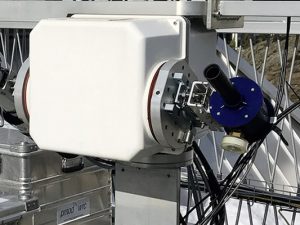OZONE SECTION
Ozone Time-Series at Arosa/Davos
The Arosa/Davos total column ozone (TCO) time-series represents the World’s longest continuous dataset, starting in 1926. It is composed of measurements from . . .
INFO3RS / KOHERENT
The INFO3RS project aims to investigate the future evolution of Total Column Ozone (TCO) in Switzerland. In order to supplement the existing measurements from . . .
INFO3RS / CCM-SOCOL
The project INFO3RS aims to investigate the future evolution of Total Column Ozone (TCO) in Switzerland. To support the trend analysis of the development of the ozone layer, . . .
International Ozone Comparisons
The XVII Regional Brewer Calibration Center for Europe (RBCC-E) Inter Comparison was held at PMOD/WRC in August 2022. MeteoSwiss and the Global Atmosphere Watch (GAW) . . .
The Arosa/Davos total ozone column measurement series represent the World’s longest continuous time-series, starting in 1926. It is composed of measurements from three Dobsons and at a later stage from three Brewer spectrophotometers. The observation of an eventual recovery of the ozone layer requires uninterrupted measurements of the highest quality, spanning several decades, and extending the current dataset to at least the middle of the 21st century. This long-term vision currently relies on instruments developed in the 1920s (Dobsons) and 1980s (Brewers), whose remaining lifetime is uncertain.
The INFO3RS GAW-CH project (“Investigating the Future Evolution of the Ozone Layer above Switzerland”) examines the recovery of the stratospheric ozone layer by means of direct radiation measurements in Davos, Arosa and global climate models. This project will assess the capabilities of state-of-the-art spectroradiometer systems to complement and eventually replace this ageing instrumentation.
The revision of the ozone time-series with state-of-the art methods and datasets and the overall uncertainty budget of the entire time-series for all intruments is important to evaluate the significance of any possible trend. This will be supported by determining the evolution of future total column ozone concentrations over Switzerland, and will be simulated with a state-of-the-art chemistry climate model (CCM-SOCOL) for various scenarios. The time when an unequivocal observation of ozone recovery can be expected will be obtained by combining the data-set analysis, the corresponding observational uncertainties and the model calculations.




